LG Electronics USA D820 GSM/CDMA/WCDMA+LTE Phone BT,WLAN(2.4.5GHz),NFC User Manual LG D820 QSG US Cover indd
LG Electronics MobileComm USA, Inc. GSM/CDMA/WCDMA+LTE Phone BT,WLAN(2.4.5GHz),NFC LG D820 QSG US Cover indd
Contents
- 1. Users Manual
- 2. Manual
- 3. User Manual
Users Manual
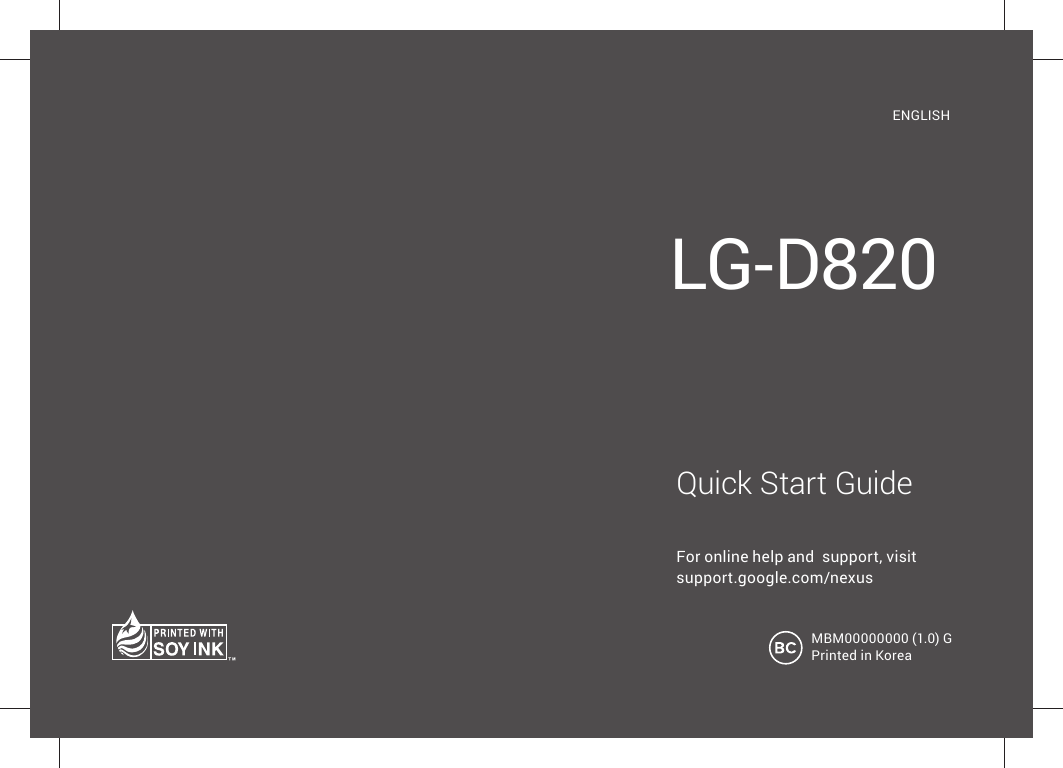
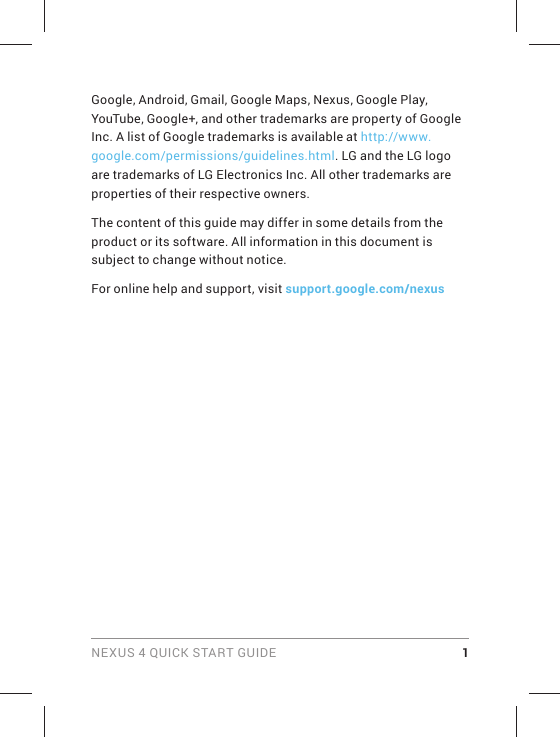
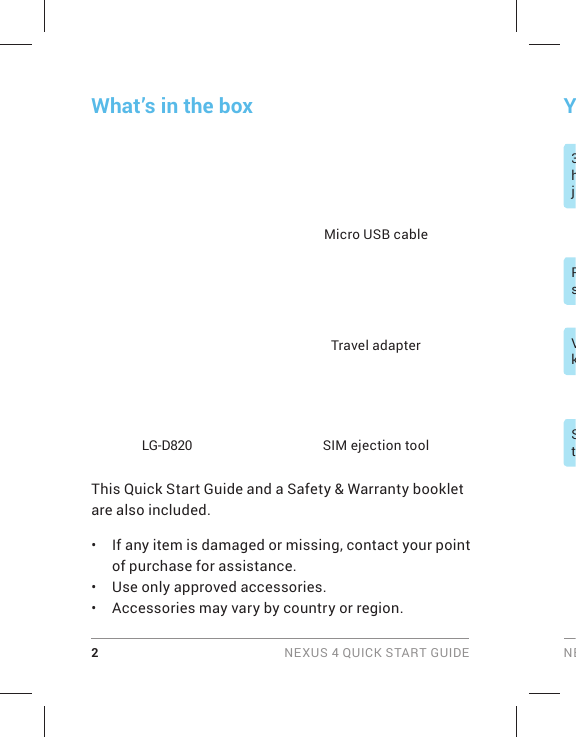
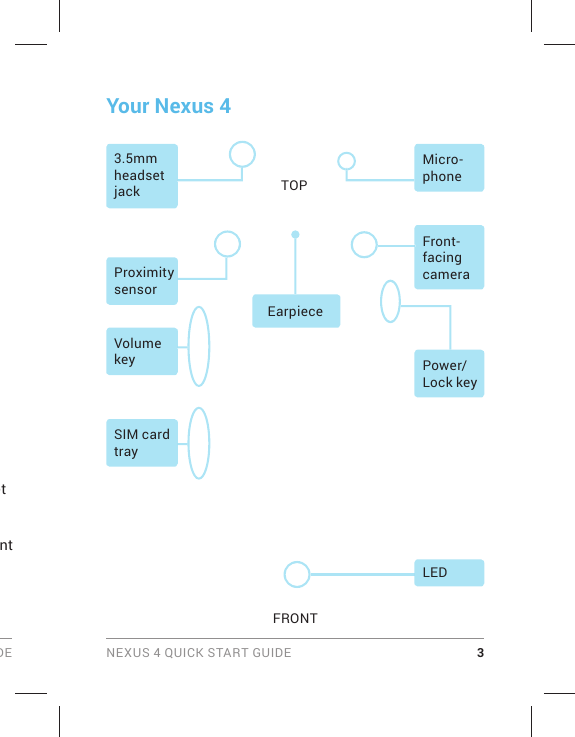
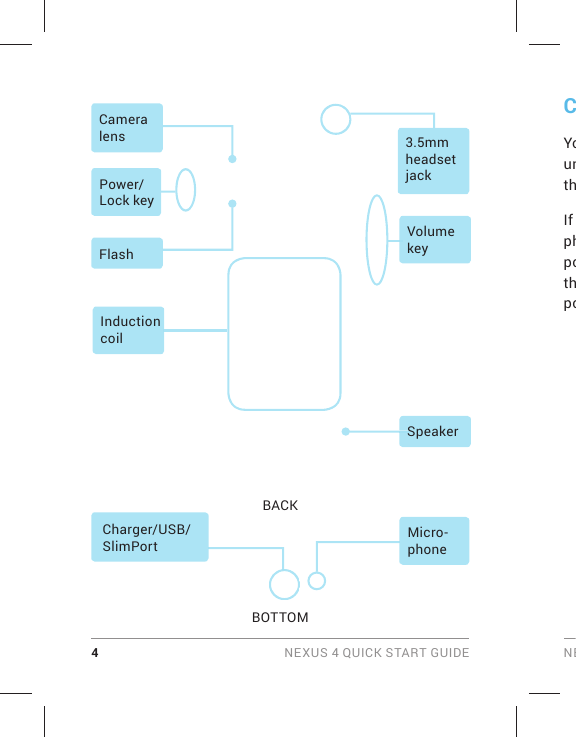
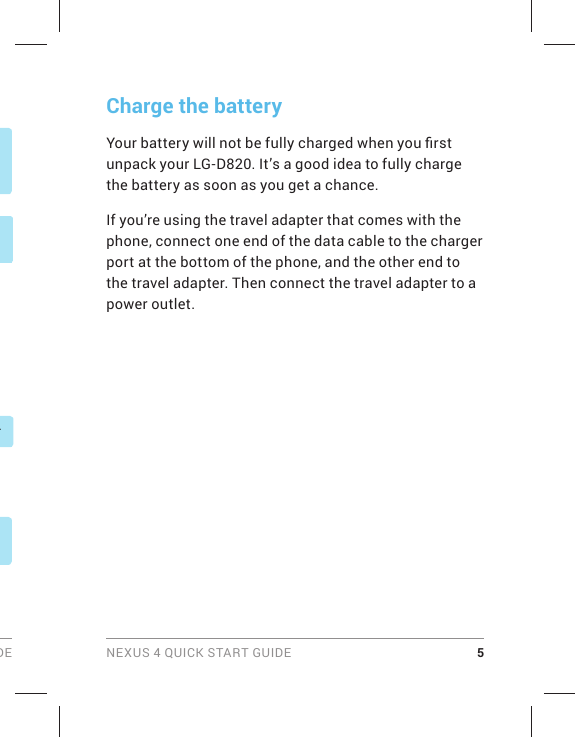
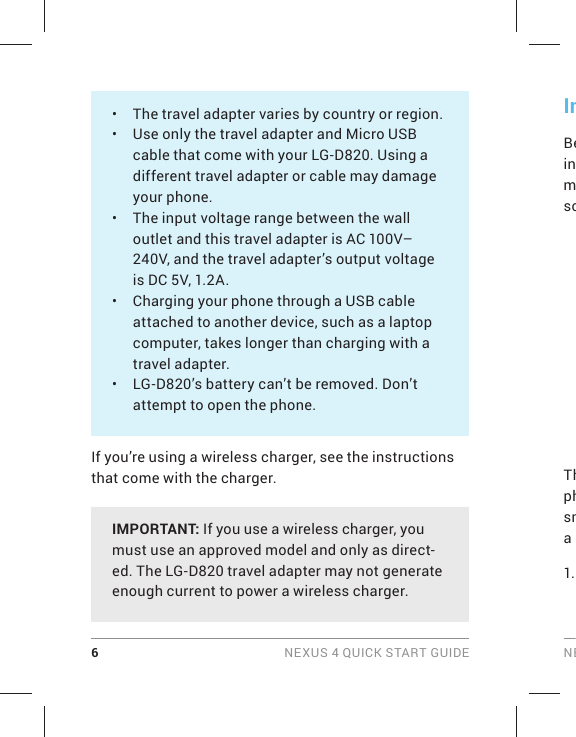
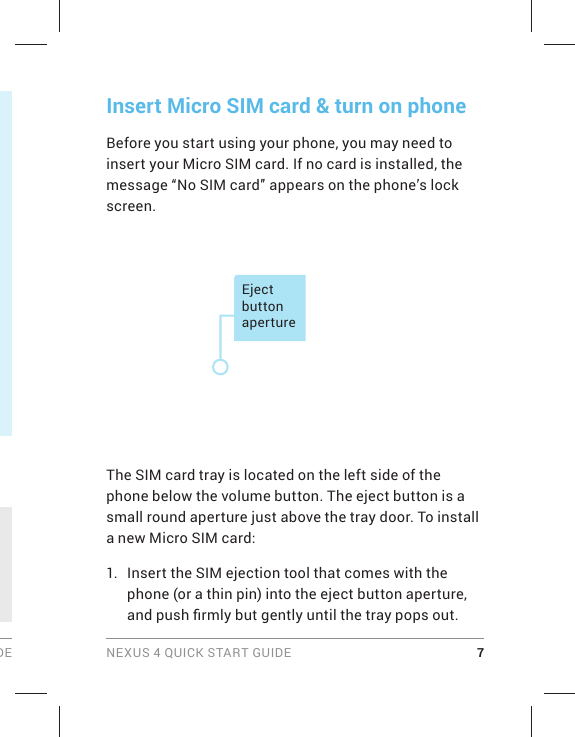
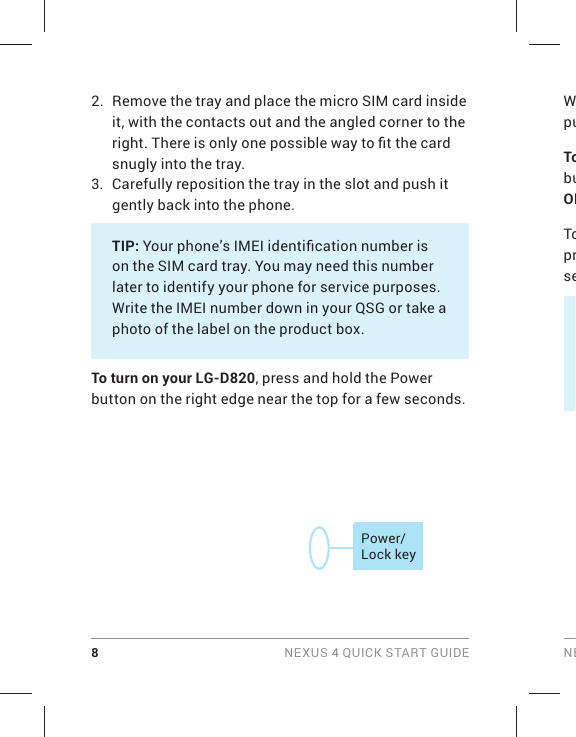
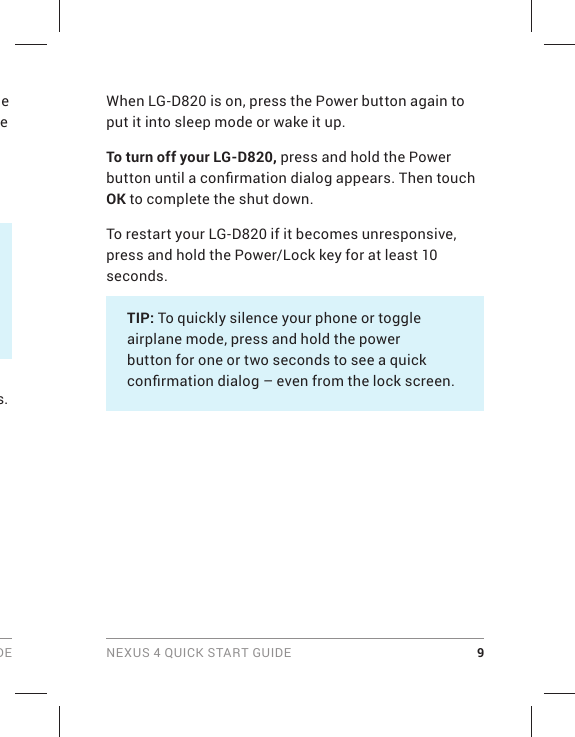
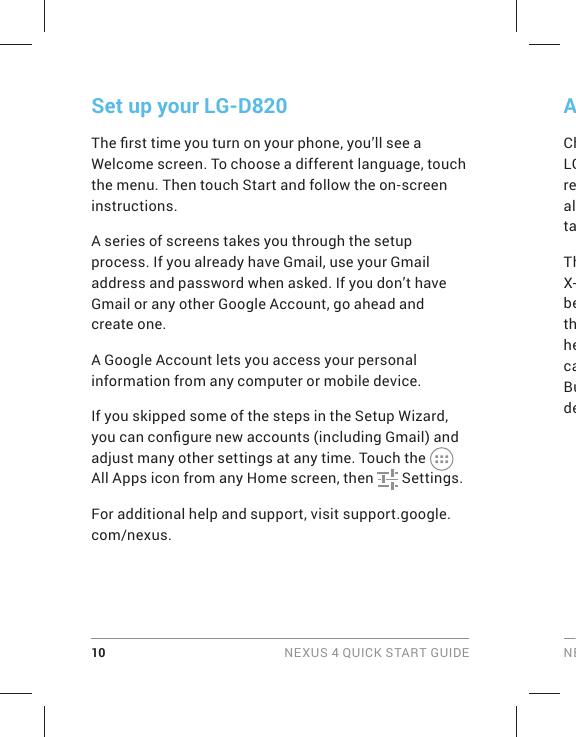
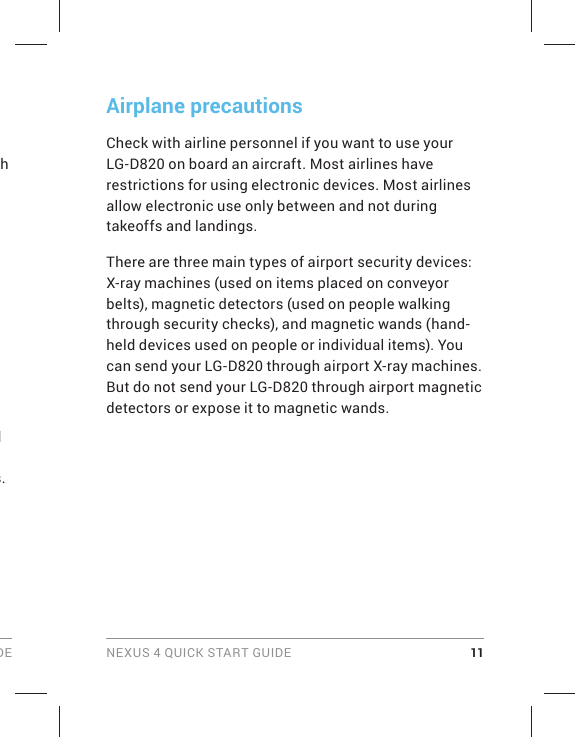

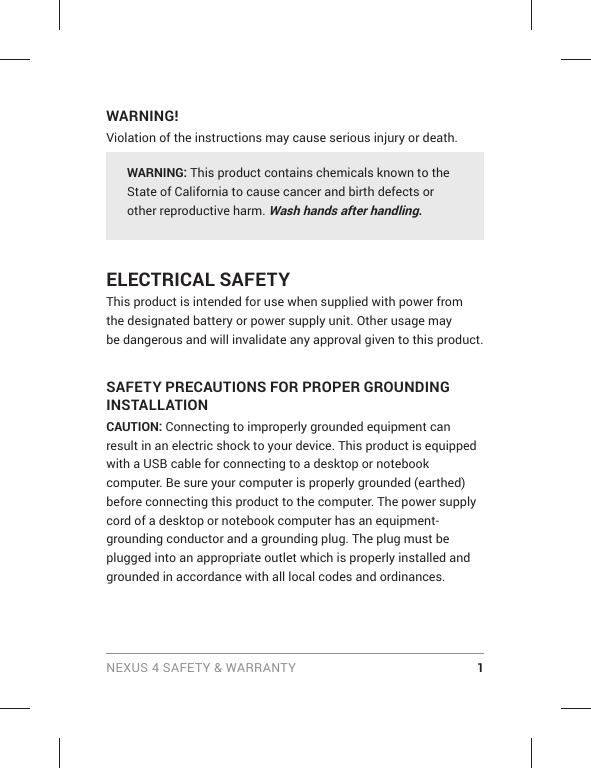
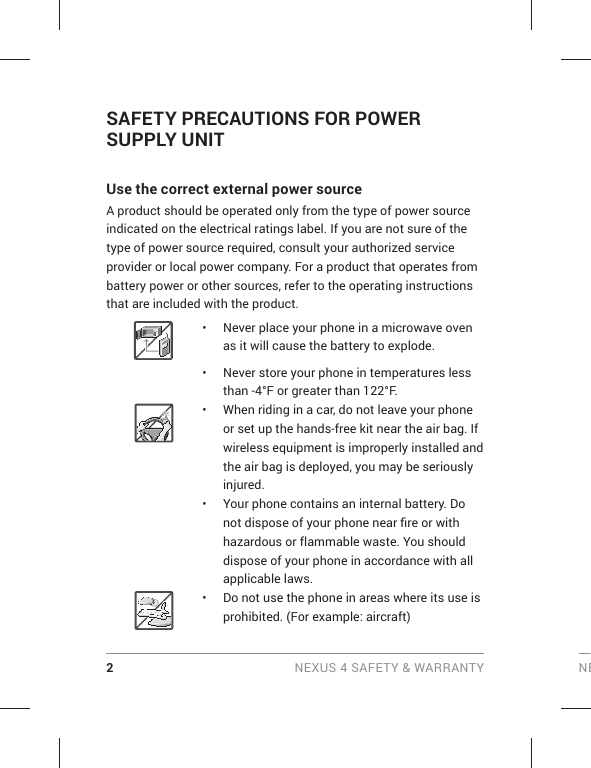
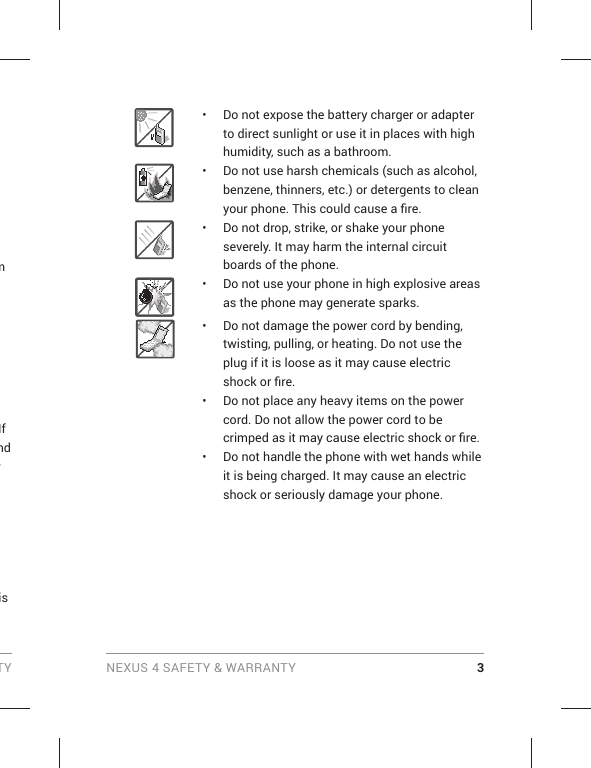
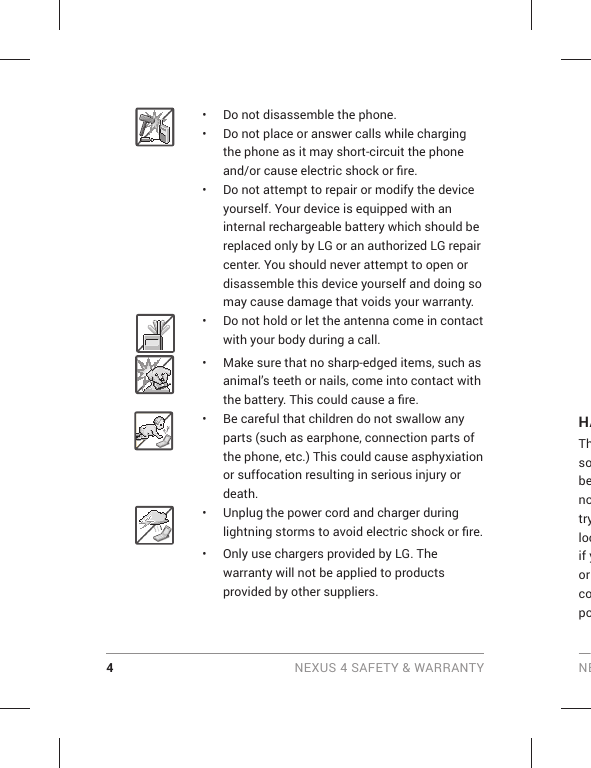
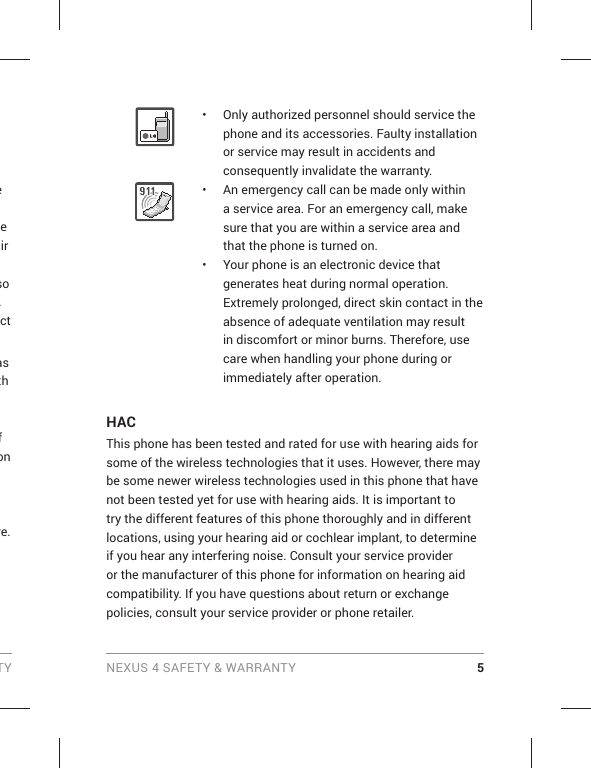
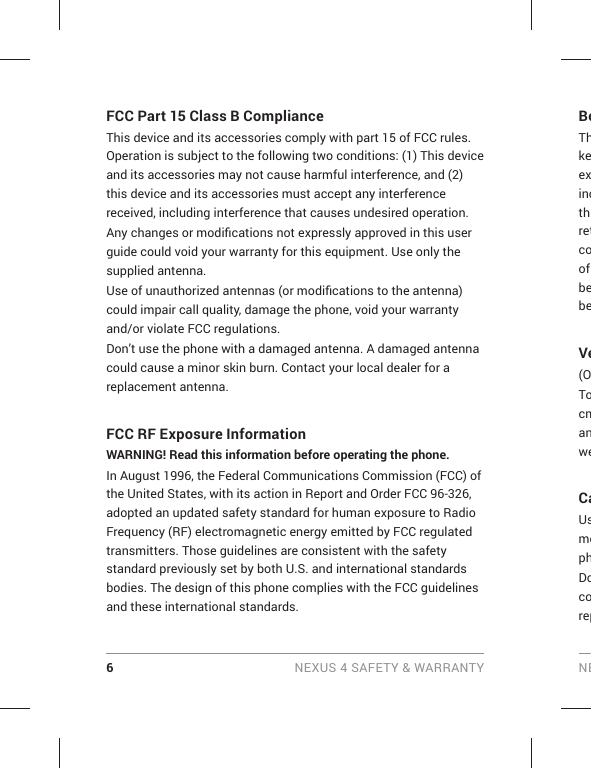
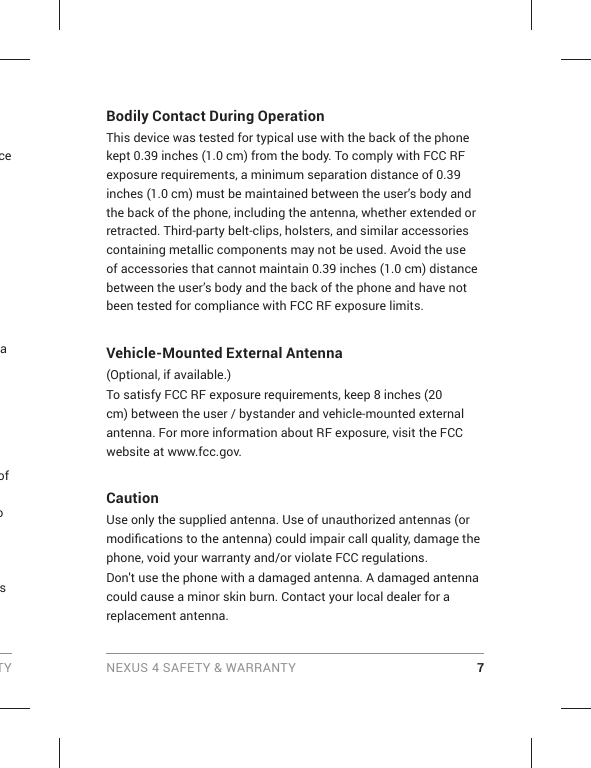
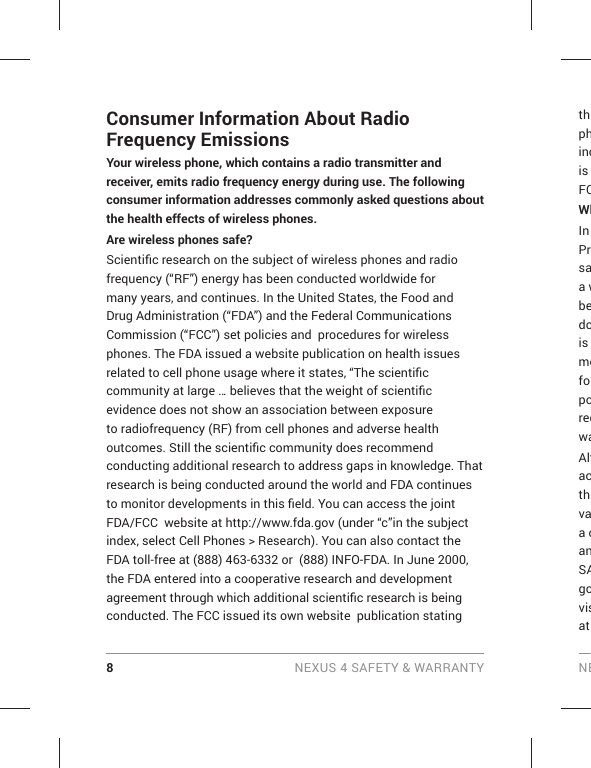
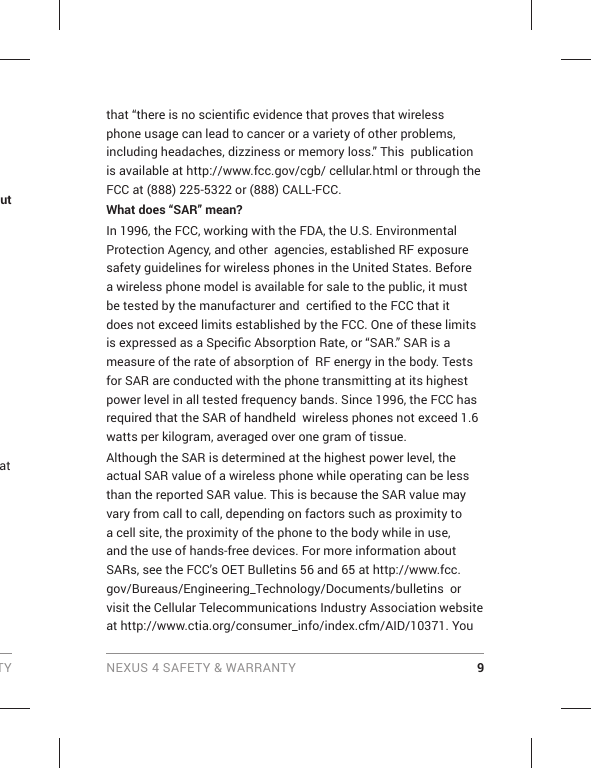
![10 NEXUS 4 SAFETY & WARRANTY NEmay also wish to contact the manufacturer of your phone.Can I minimize my RF exposure? If you are concerned about RF, there are several simple steps you can take to minimize your RF exposure. You can, of course, reduce your talk time. You can place more distance between your body and the source of the RF, as the exposure level drops off dramatically with distance. The FDA/FCC website states that “hands-free kits can be used with wireless phones for convenience and comfort. These systems reduce the absorption of RF energy in the head because the phone, which is the source of the RF emissions, will not be placed against the head. On the other hand, if the phone is mounted against the waist or other part of the body during use, then that part of the body will absorb more RF energy. Wireless phones marketed in the U.S. are required to meet safety requirements regardless of whether they are used against the head or against the body. Either confi guration should result in compliance with the safety limit.” Also, if you use your wireless phone while in a car, you can use a phone with an antenna on the outside of the vehicle. You should also read and follow your wireless phone manufacturer’s instructions for the safe operation of your phone. Do wireless phones pose any special risks to children?The FDA/FCC website states that “the scientifi c evidence does not show a danger to users of wireless communication devices, including children.” The FDA/FCC website further states that “some groups sponsored by other national governments have advised that children be discouraged from using wireless phones at all”. For example, the Stewart Report from the United Kingdom [“UK”] magrusUKstranhttChUKat (seexusWhFo(wU.FDNoTehttPhU.44WaTehtt](https://usermanual.wiki/LG-Electronics-USA/D820.Users-Manual/User-Guide-2037438-Page-24.png)
![TY NEXUS 4 SAFETY & WARRANTY 11e , t me made such a recommendation in December 2000. In this report a group of independent experts noted that no evidence exists that using a cell phone causes brain tumors or other ill effects. [The UK’s] recommendation to limit cell phone use by children was strictly precautionary; it was not based on scientifi c evidence that any health hazard exists. A copy of the UK’s leaflet is available at http://www.dh.gov.uk (search “mobile”), or you can write to: NRPB, Chilton, Didcot, Oxon OX11 ORQ, United Kingdom. Copies of the UK’s annual reports on mobile phones and RF are available online at www.iegmp.org.uk and http://www.hpa.org.uk/radiation/ (search “mobile”). Parents who wish to reduce their children’s RF exposure may choose to restrict their children’s wireless phone use. Where can I get further information about RF emissions?For further information, see the following additional resources (websites current as of April 2005): U.S. Food and Drug AdministrationFDA Consumer magazineNovember-December 2000Telephone: (888) INFO-FDAhttp://www.fda.gov (Under “c” in the subject index, select Cell Phones > Research.)U.S. Federal Communications Commission445 12th Street, S.W.Washington, D.C. 20554Telephone: (888) 225-5322http://www.fcc.gov/oet/rfsafety](https://usermanual.wiki/LG-Electronics-USA/D820.Users-Manual/User-Guide-2037438-Page-25.png)
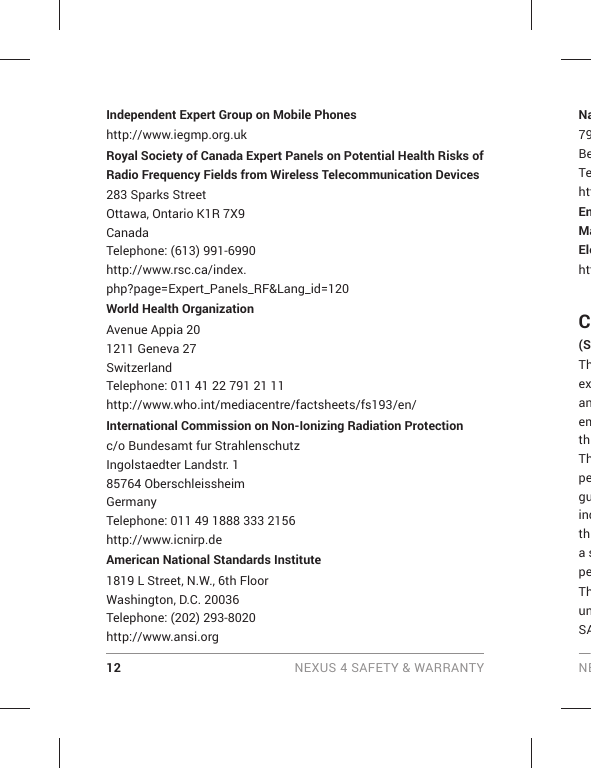
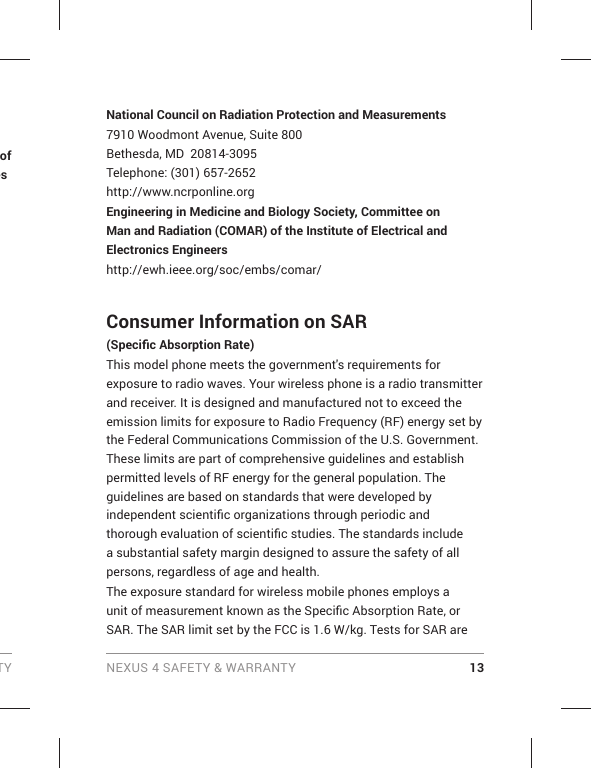
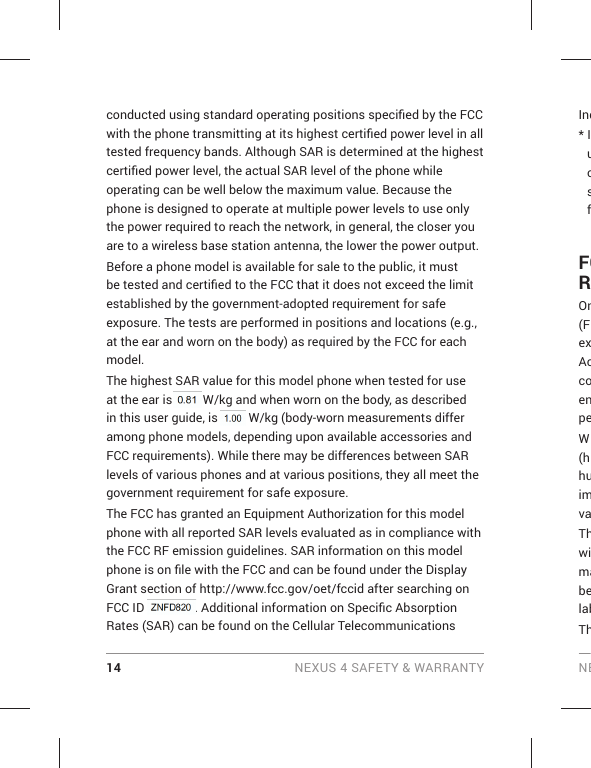
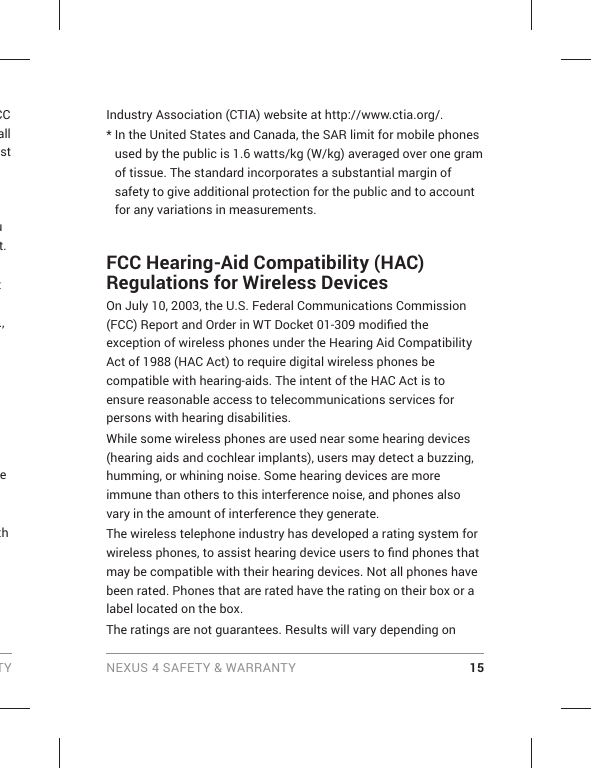
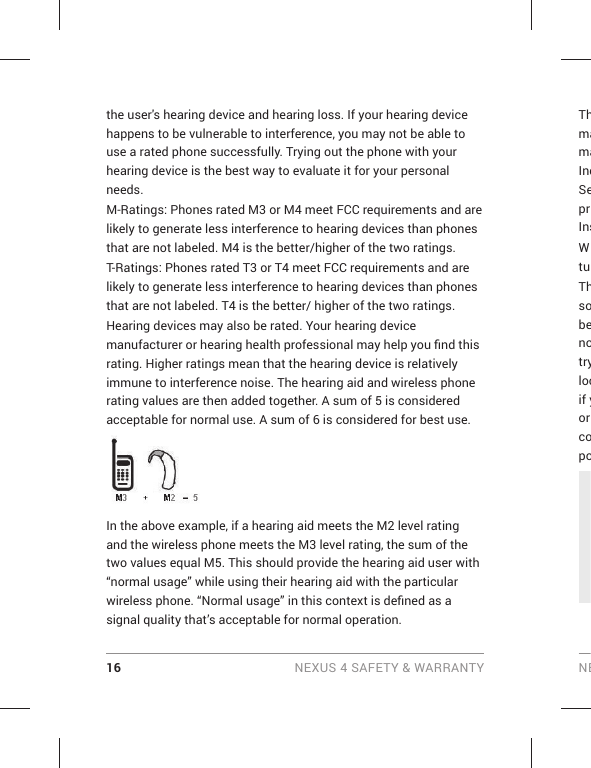
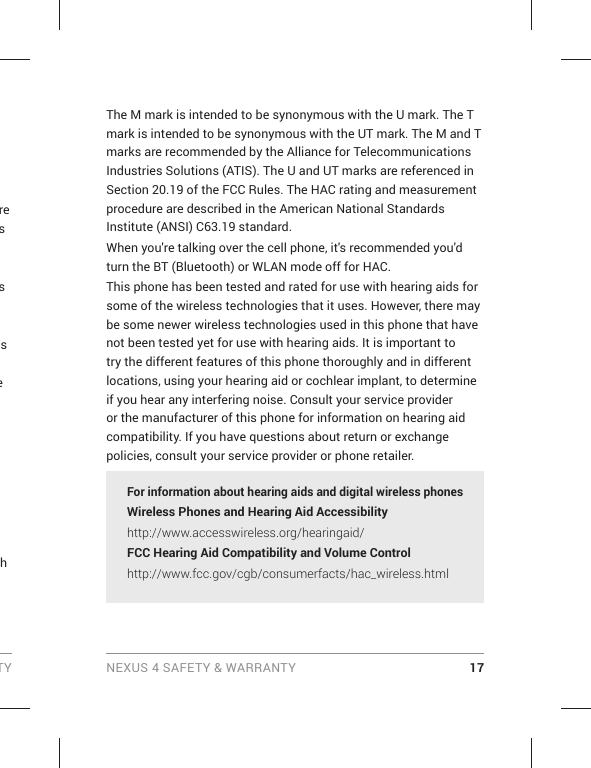
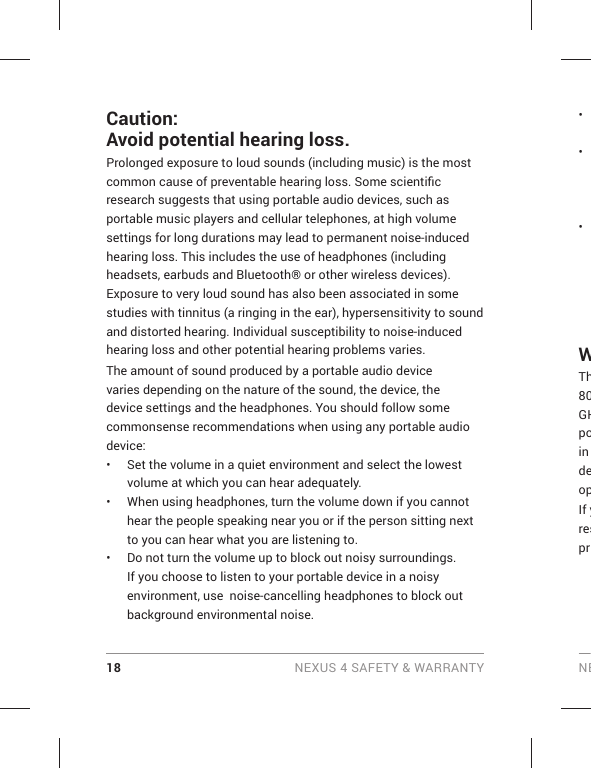
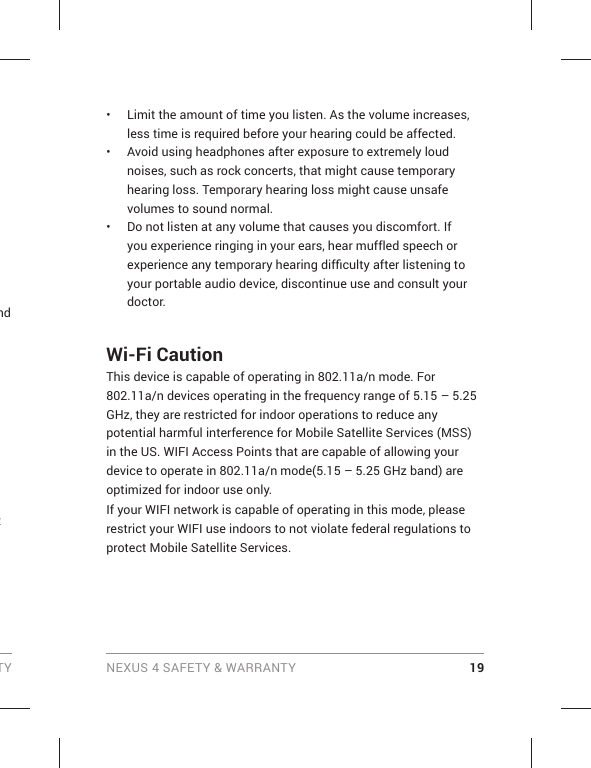
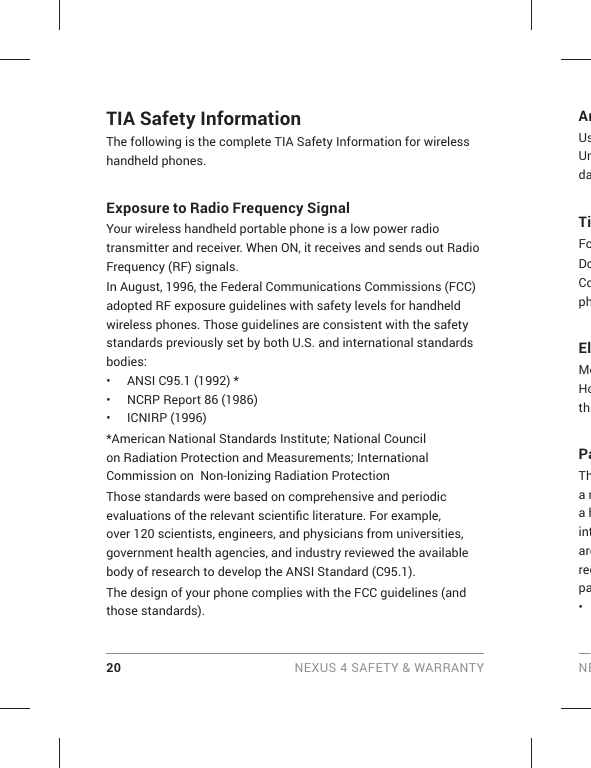
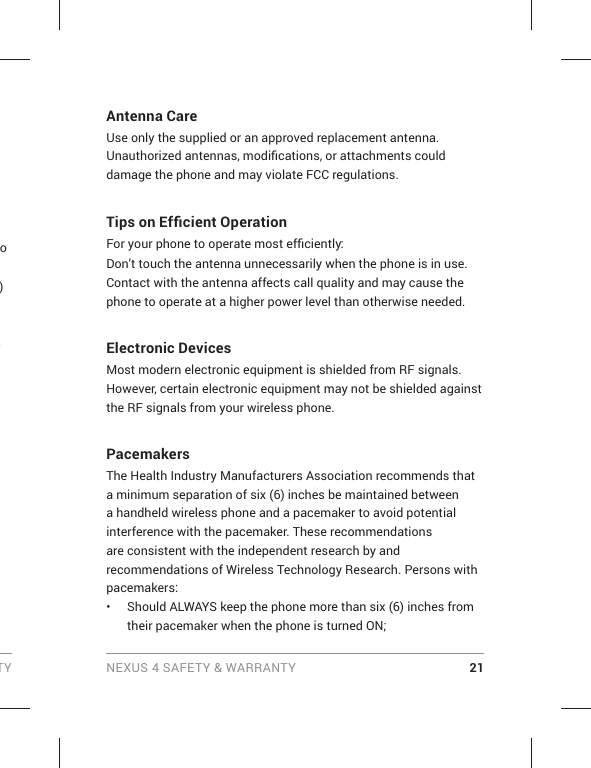
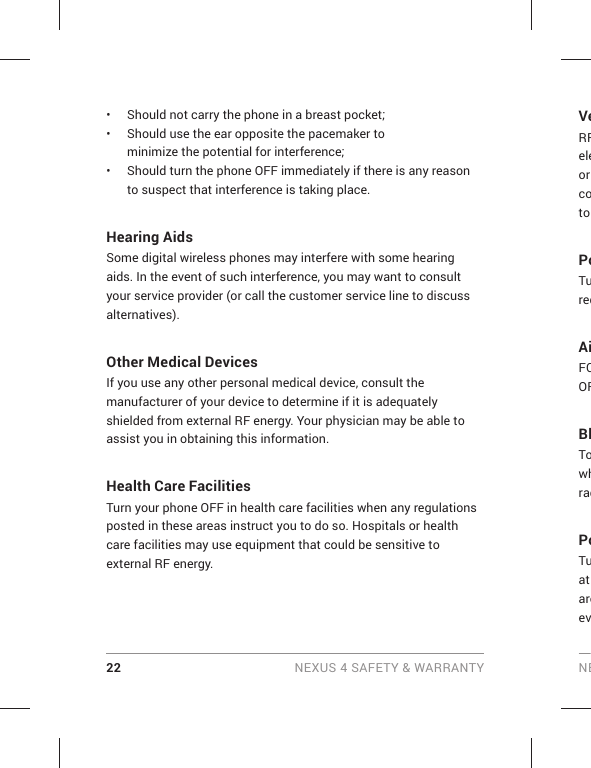
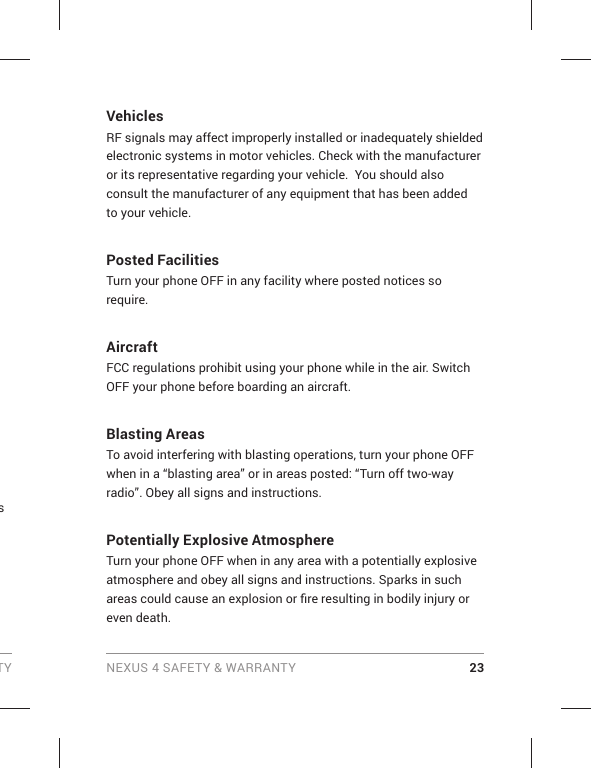
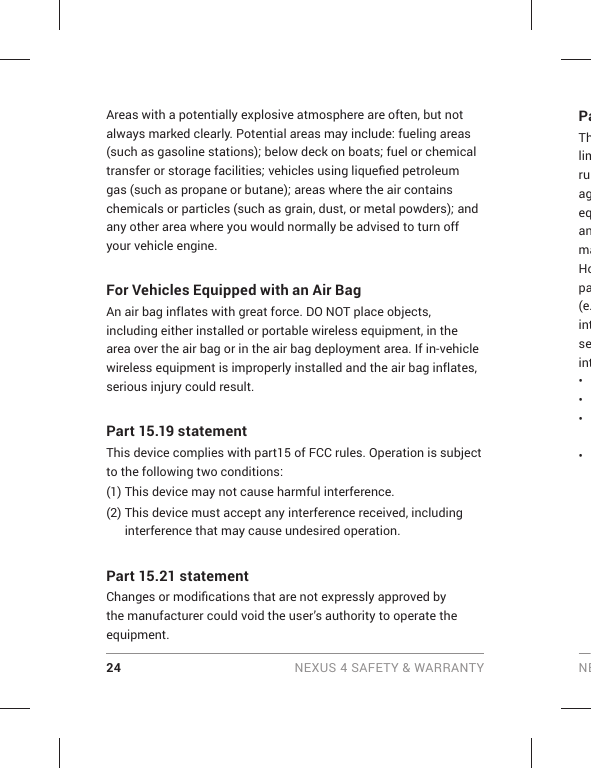
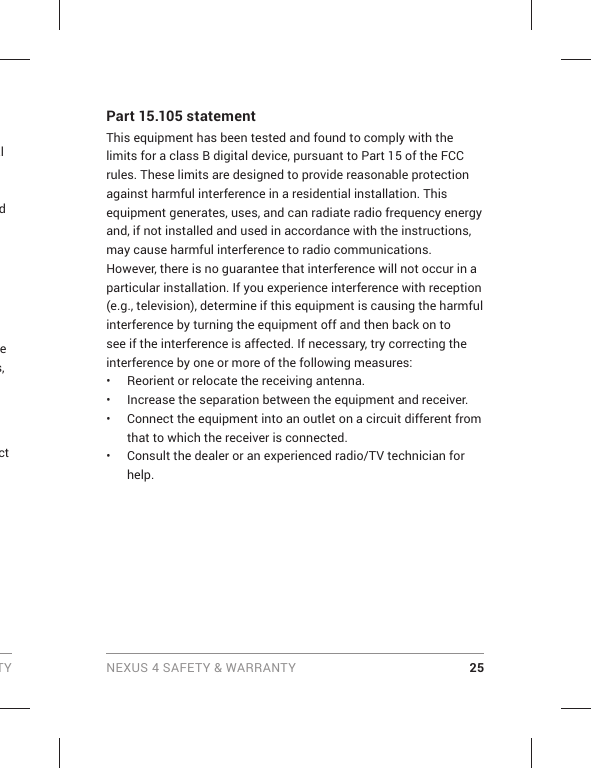
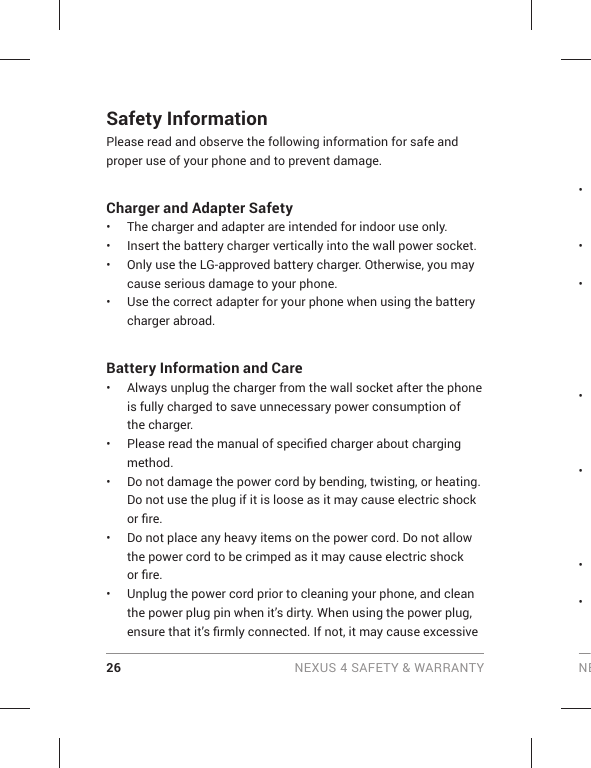
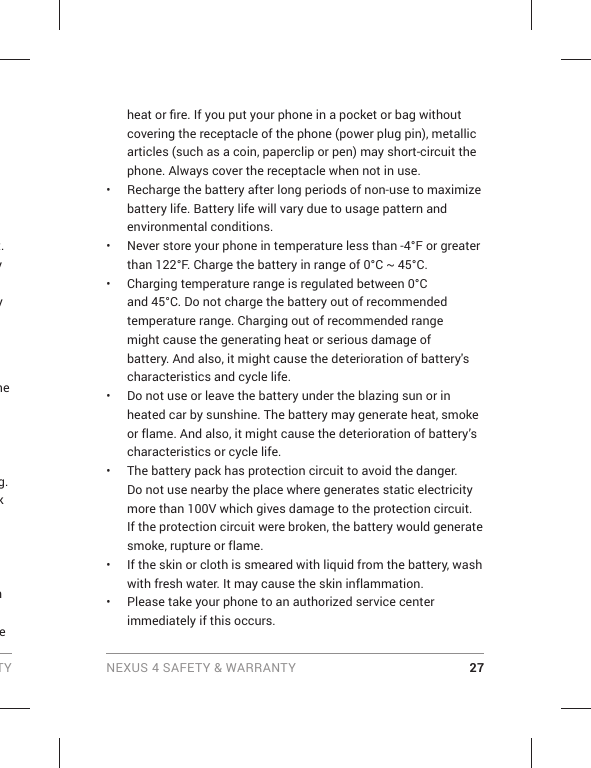
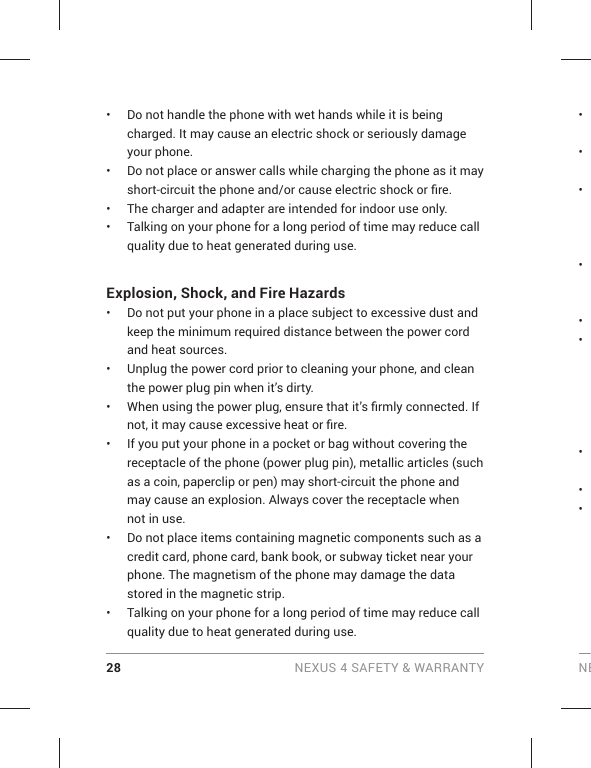
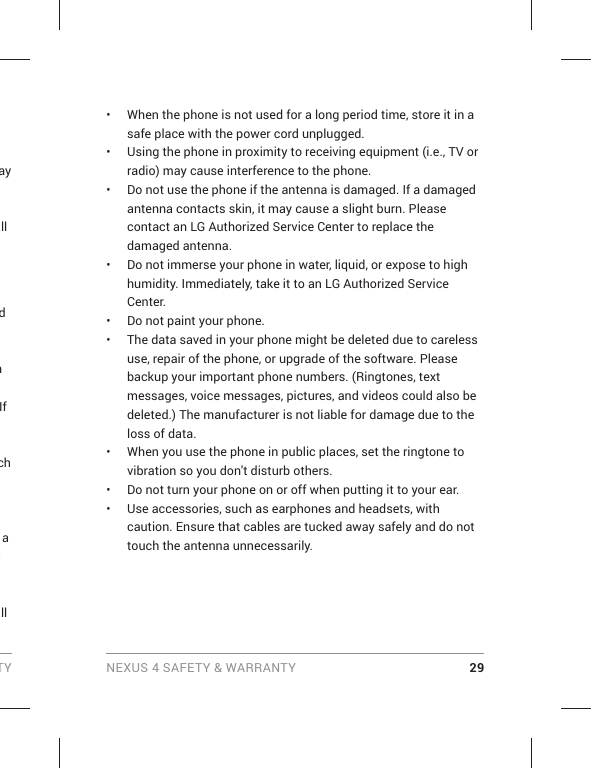
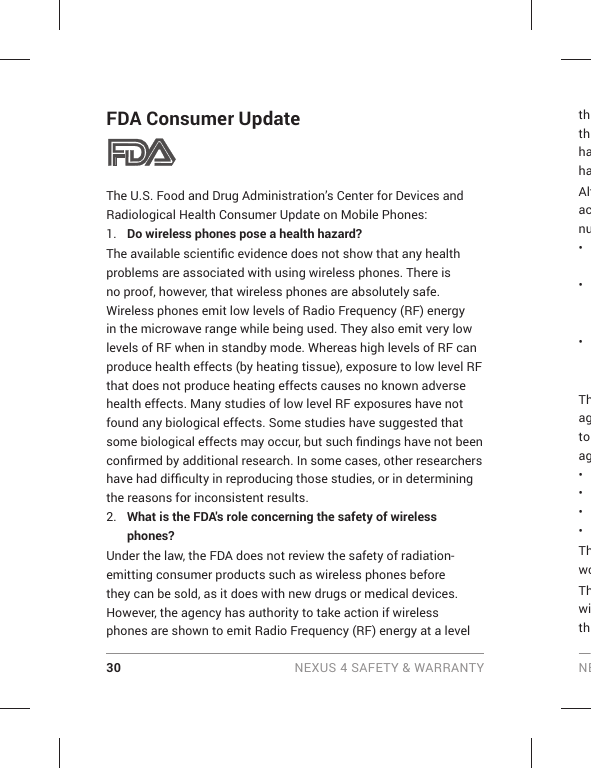
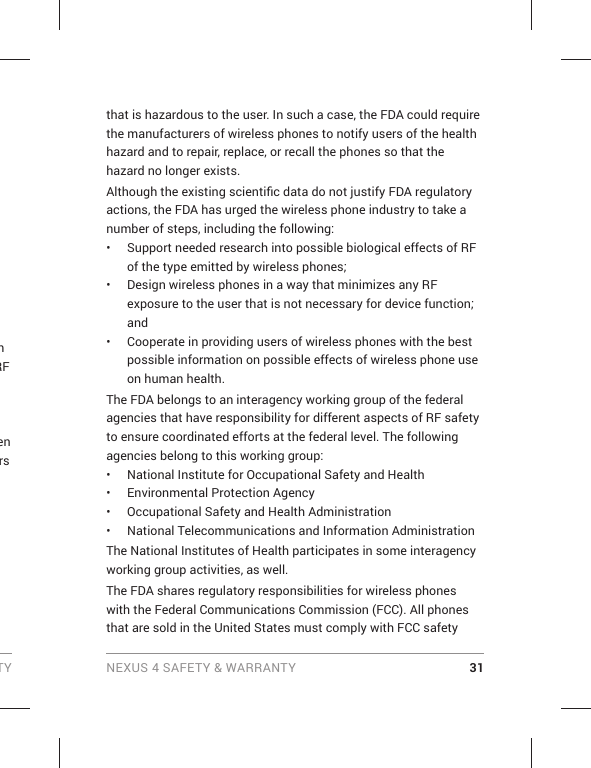
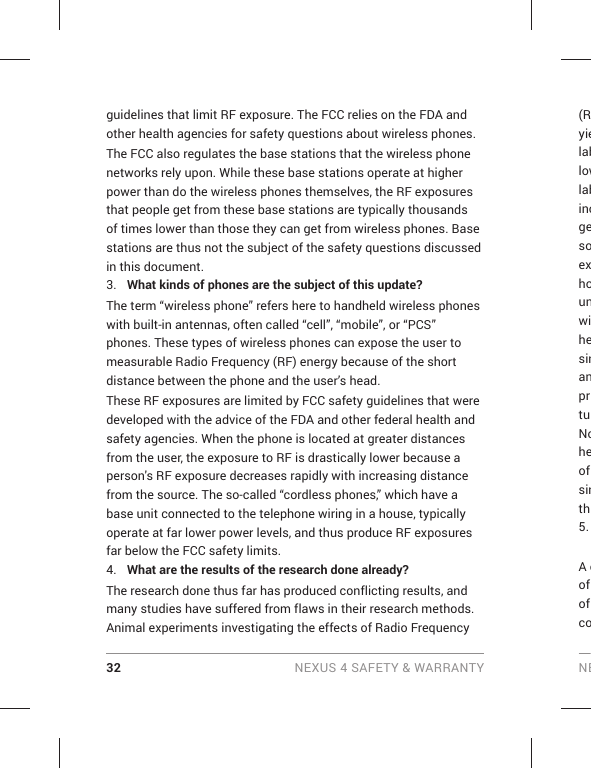
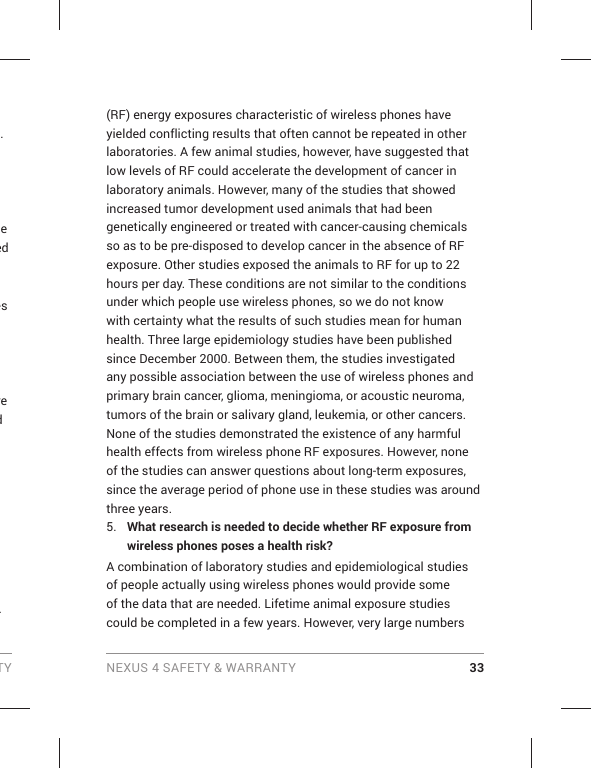
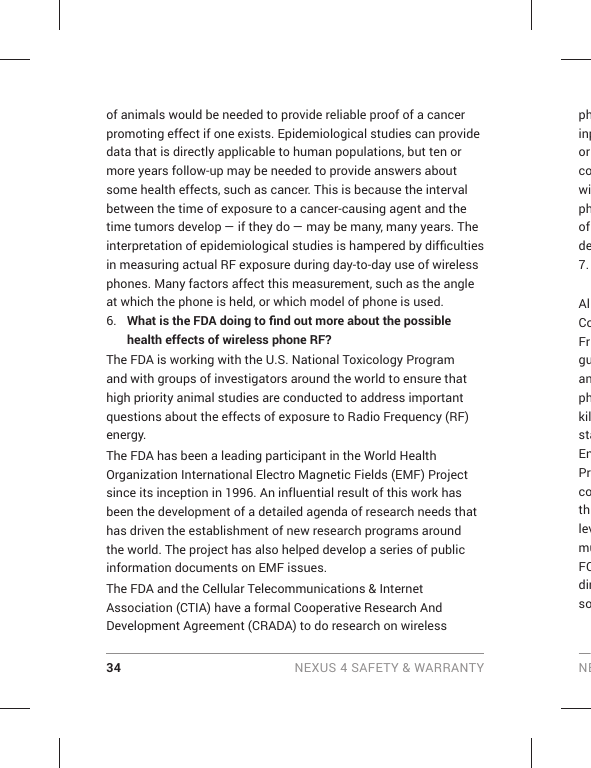
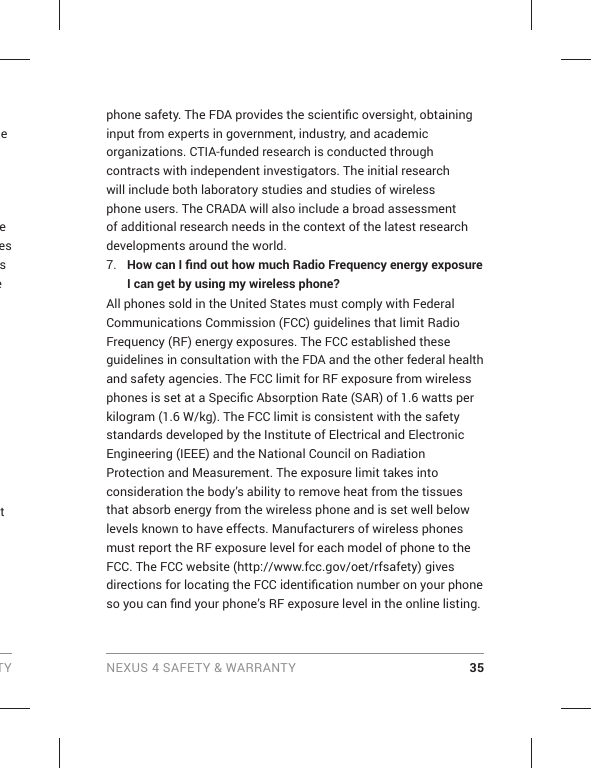
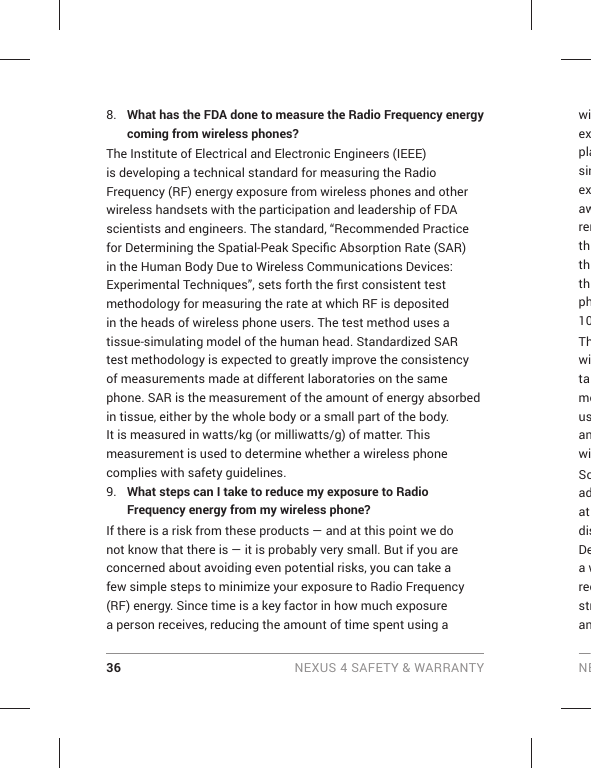
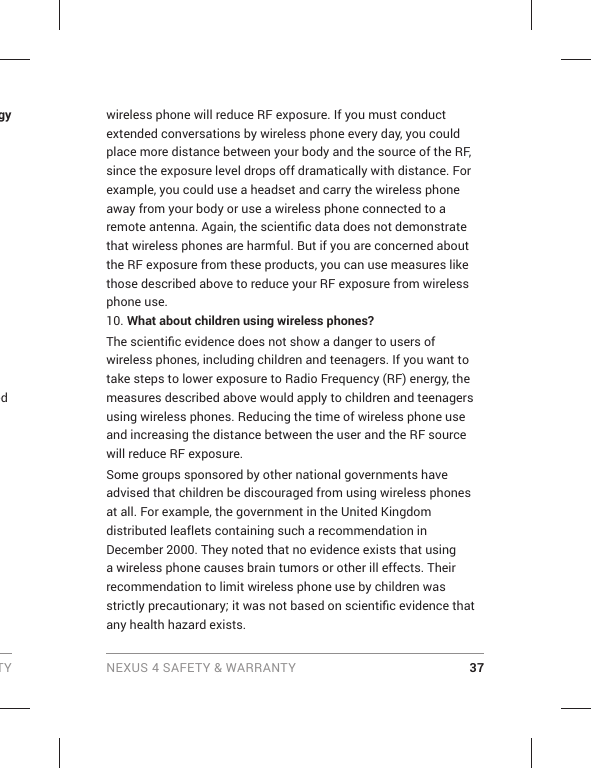
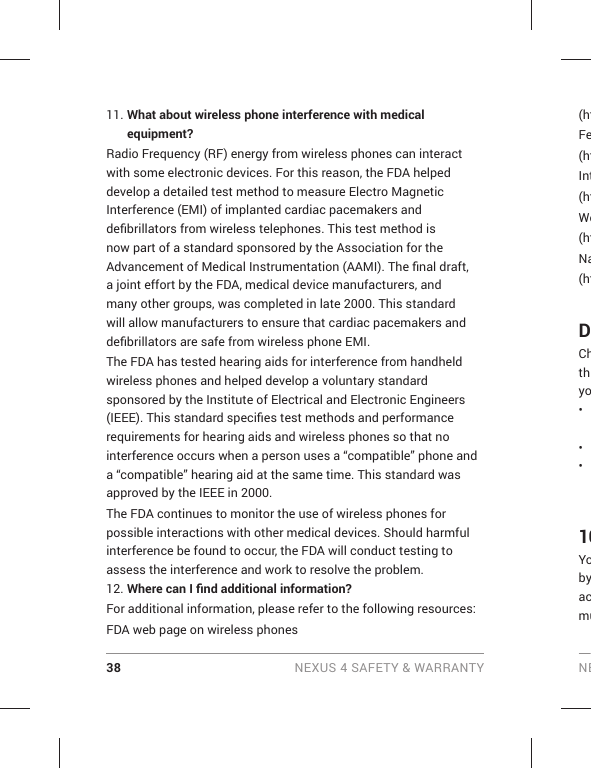
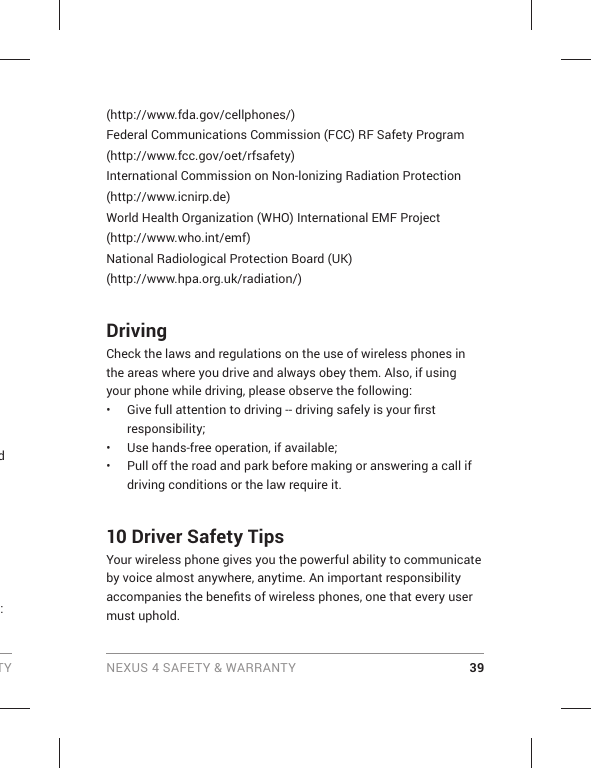
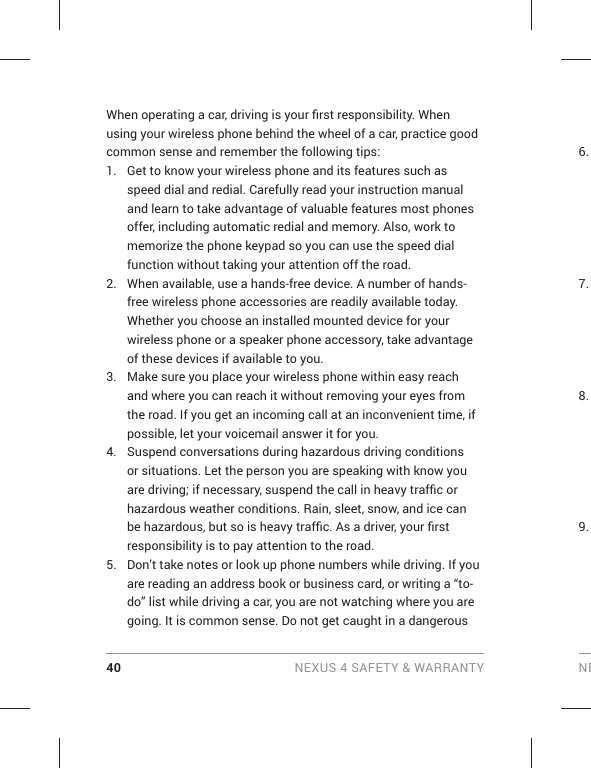
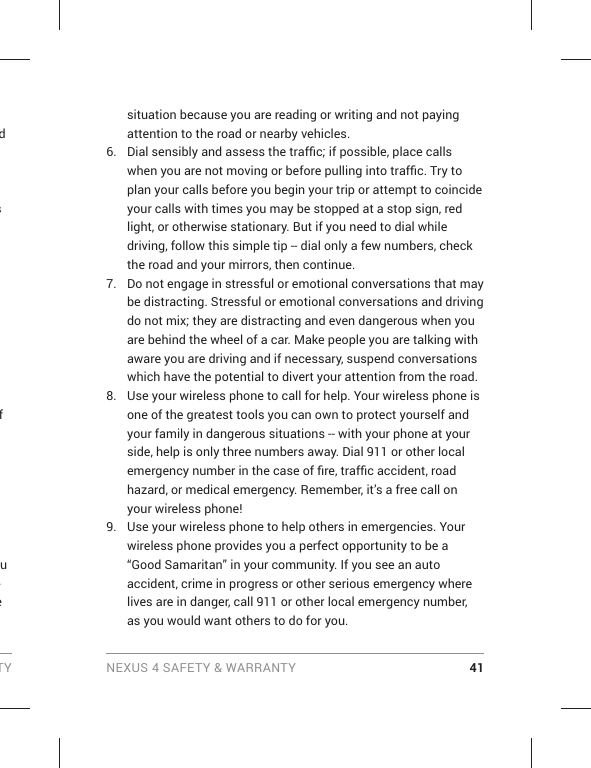
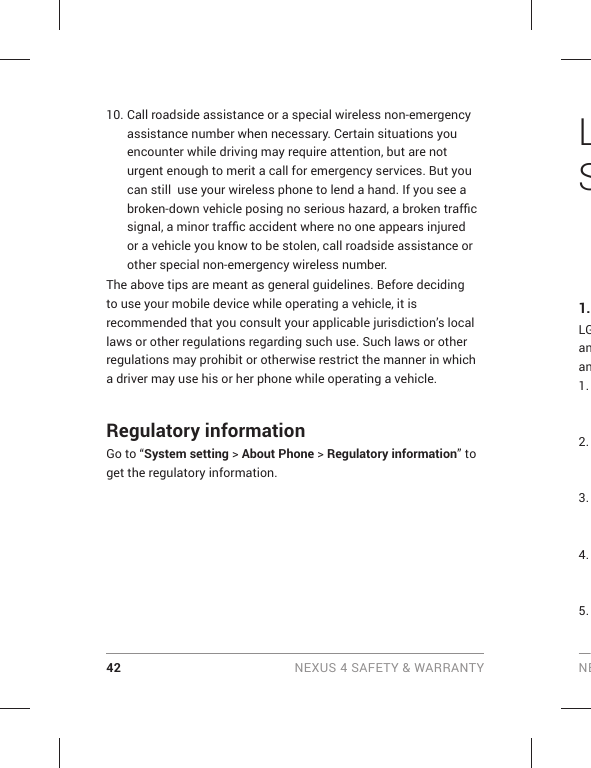
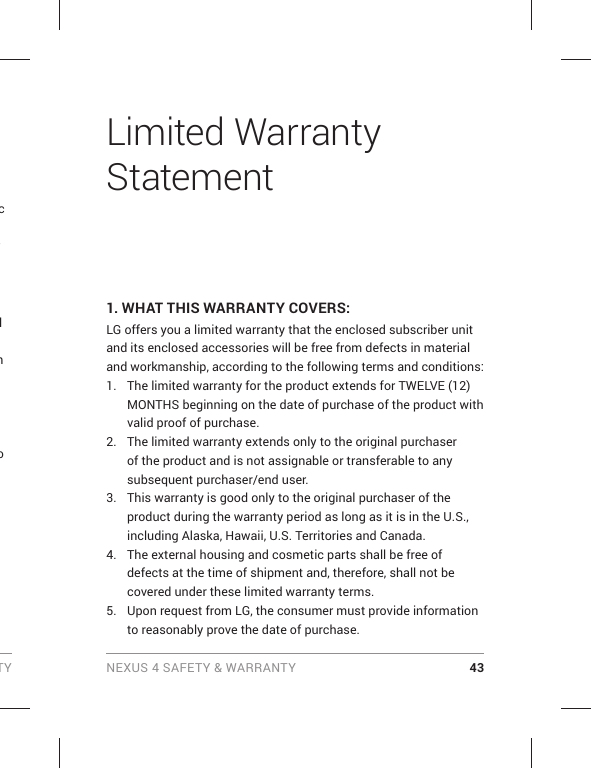
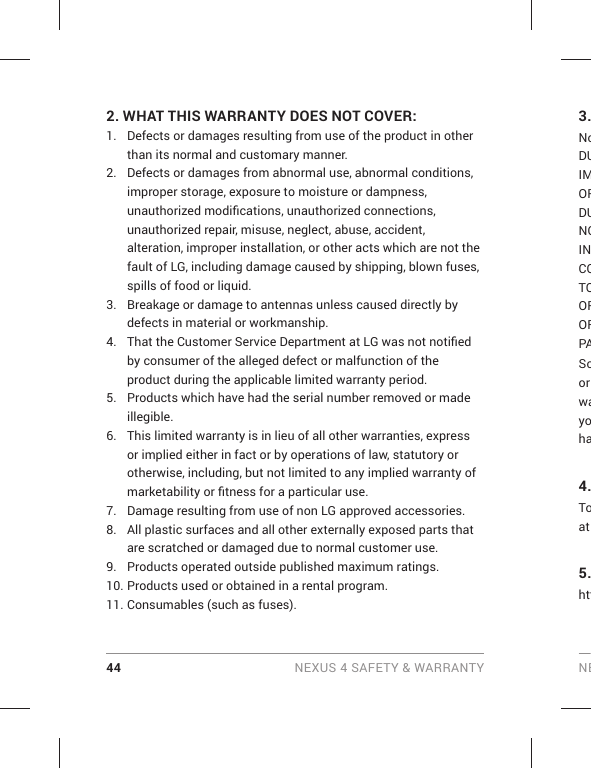
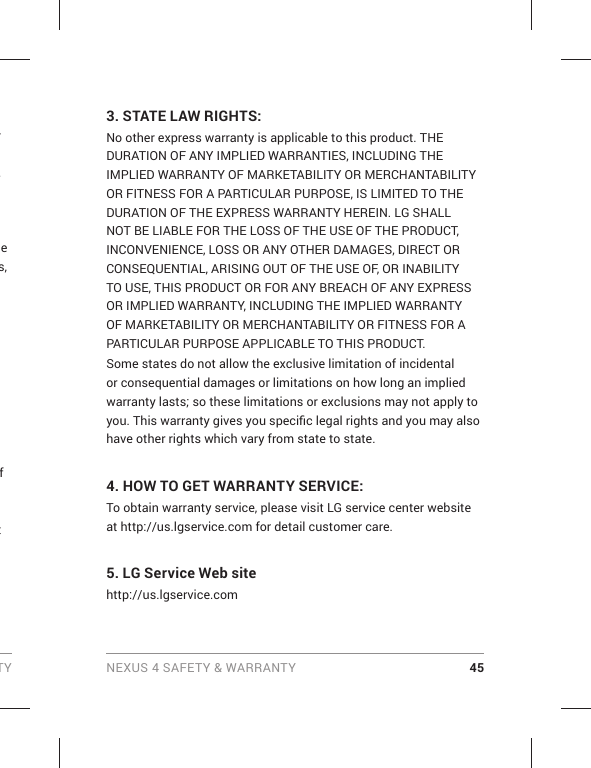
![46 NEXUS 4 SAFETY & WARRANTY7.11 Warranty Laws The following laws govern warranties that arise in retail sales of consumer goods: • The California Song-Beverly Consumer Warranty Act [CC §§1790 et seq], • The California Uniform Commercial Code, Division Two [Com C §§2101 et seq], and • The federal Magnuson-Moss Warranty Federal Trade Commission Improvement Act [15 USC §§2301 et seq; 16 CFR Parts 701– 703]. A typical Magnuson-Moss Act warranty is a written promise that the product is free of defects or a written promise to refund, repair, or replace defective goods. [See 15 USC §2301(6).] Remedies include damages for failing to honor a written warranty or service contract or for violating disclosure provisions. [See 15 USC §2310(d).] Except for some labeling and disclosure requirements, the federal Act does not preempt state law. [See 15 USC §2311.] The Consumer Warranty Act does not affect the rights and obligations of parties under the state Uniform Commercial Code, except the provisions of the Act prevail over provisions of the Commercial Code when they conflict. [CC §1790.3.] For purposes of small claims actions, this course will focus on rights and duties under the state laws.](https://usermanual.wiki/LG-Electronics-USA/D820.Users-Manual/User-Guide-2037438-Page-60.png)